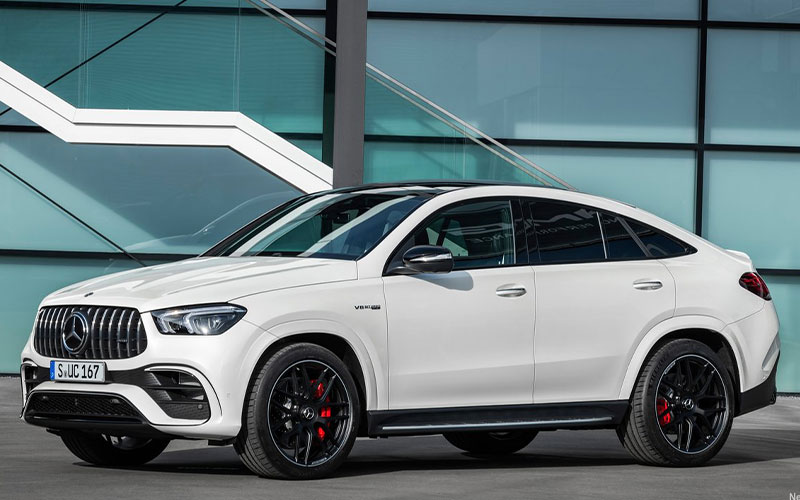Why Depreciation is the Key to Getting a Good Deal
Finding a good deal in today’s market can be challenging, but we’ll tell you how to maximize the value of your next car purchase.
A Sellers’ Market

The automotive industry is in a weird place right now. The global chip shortage and associated supply chain issues have put a squeeze on new vehicle inventories. Since demand hasn’t taken a similar hit thanks to low interest rates and government stimulus, dealers have been able to raise prices on both new and used vehicles. Depreciation rates are less steep than is usual, even for a lot of luxury cars that in typical circumstances would lose 30-50 percent of their value in their first few years. As a result, whether you’re looking to buy new or used, you can expect to pay more than usual for your next vehicle. And since supply chain issues aren’t likely to be resolved for months or even years to come, the market isn’t cooling down any time soon.
This altered landscape changes the typical car buying calculus. Finding “value” in the market is no longer as simple as buying a two- or three-year-old used vehicle, still in that sweet spot of cost versus expected longevity. The inflated prices and more shallow depreciation mean many such used examples are being listed at nearly the same price as brand-new vehicles, provided you can find a new one to buy.
Depreciation All-Stars

Where you can focus to find value in today’s car market on is on depreciation rates and residual value. If you’re apt to buy or lease a vehicle for a few years and then look to trade it in, it would be best to concentrate your attention on vehicles that hold their value well, both in today’s market and historically.
Looking at three- and five-year depreciation rates can provide a good indication of how much value you stand to have retained when it comes time to trade in that vehicle. It’s important to note that, while the current supply chain woes won’t be ameliorated for perhaps a year or more, the market will sort itself out. The modest levels of car depreciation we’re currently seeing is bound to change as supply rises. Used car values will eventually fall back to Earth. Buying into the right vehicle in this market can ensure that you’re not taking a bath when things stabilize.

Obviously, there are brands whose reputations are built on their reliability and longevity. Toyota/Lexus and Honda/Acura are stalwarts in this area, with manufacturers like Dodge, Subaru, and Mazda climbing the low depreciation ranks. Luxury brands with devoted fan bases also tend to do well, like Porsche and Tesla.
For individual models, a good mix of perennial leaders and new comers offer great options for retaining value over time. The Jeep Wrangler, with its super loyal fans and rugged reputation, holds its value the best of anything on the road. The Toyota trio of Tundra, Tacoma, and 4Runner are all surefire bets. With their fresh designs and good build quality, Hyundai/Kia models like the ultra-popular Telluride and Kona are also holding value well. For more on vehicles that retain their value, here’s a handy Top 10 List.
Cheap Luxury and Cross-Shopping

There are still other ways of finding a deal when the deals have dried up. One option, rather than seeking vehicles with very shallow depreciation curves, is to shop cars that are still depreciating at a decent clip, even in this current market. This option might best fit shoppers who are looking to stay in the same vehicle for many years to come.
The most usual of suspects is the luxury sedans and SUVs, where many vehicles still hemorrhage 40 to 50 percent or more of their value in the first three years of ownership. And yet, like most other used vehicles, these cars, mechanically speaking, still have a lot of life left in them. For example, in a recent comparison of a new versus used Mercedes-Benz GLE, we found the top trim AMG GLE 63 S from five years ago runs roughly $100,000 less than this current year’s GLE AMG 63 S.

Be assured, something like the Mercedes-Benz GLE will cost more to fix than your typical RAV4, most used luxury vehicles carry fewer miles than their comparably aged non-luxury counterparts. To further improve your odds, you can limit your search to certified pre-owned (CPO) vehicles. You can read more about CPO vehicles here.
And one final note, you can eke out still more value out of your purchase by being flexible in which vehicles you’re considering and concentrating your search based on your must-have features. By cross-shopping brands with available features against a final out-the-door price, you can maximize your dollars on what really matters to you as a car buyer rather than remaining tethered to a vehicle, segment, or brand that might not offer the same value.









